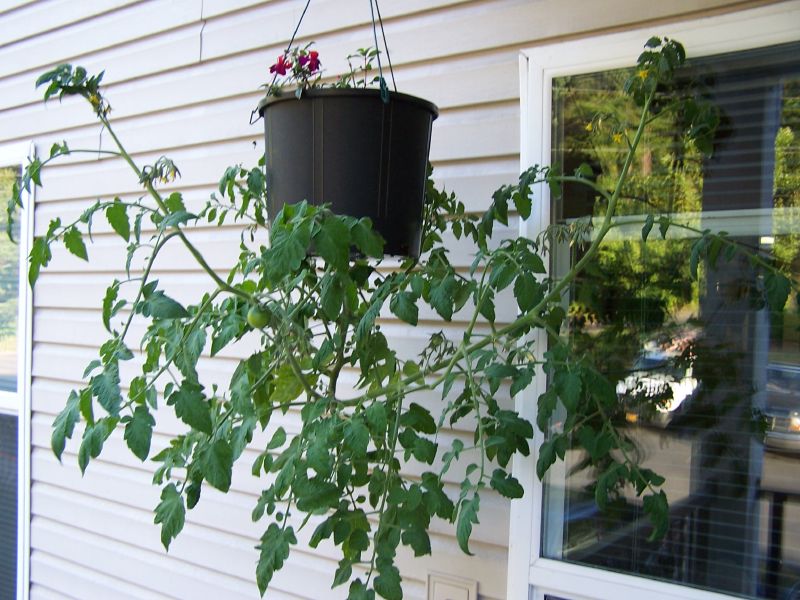Course Outline
In this course, we will be learning an alternative growing method for tomatoes. Usually, tomatoes are planted in the ground, and then a cage or stakes are set up around the plant to help it grow:

Tomatoes growing in cages. Image by flickr user jeffreyw.
In this course, we’re going to learn how to grow tomatoes upside-down, and why this is a good growing method. Together, we will research both growing methods, the advantages and disadvantages of each, and then put together our own upside-down tomato planters. They look like this:
Group Work
You will be working in small groups of 4-5 members for the duration of this course. We will start by researching the varieties of tomatoes available. In your groups, you will decide which variety you want to plant.
Science
We will experiment with light, soil and nutrition to understand the optimal growing conditions for your chosen plant variety. As scientists, you will record data, document your process and compare your results. Based on your observations and findings, you will make adjustments to your growing environment. By the end of the experiment, you will be able to recommend the best growing conditions for your tomato species.
Geography
As geographers, you will look at climate conditions that affect your plant. What is the best environment for your tomatoes? What are the features of that environment?
Multimedia
In your groups, and individually, you will be documenting your plants’ progress using weekly multimedia journals. You will take photos, record audio and video, and document your experiments and results. You will work with your group members to create a multimedia project, which you will present to your class, along with your conclusions, during the final portion of this course.
This course will present a lot of questions but not necessarily a lot of answers. Together with your group members you will find the answers to your questions.


This Post Has 0 Comments